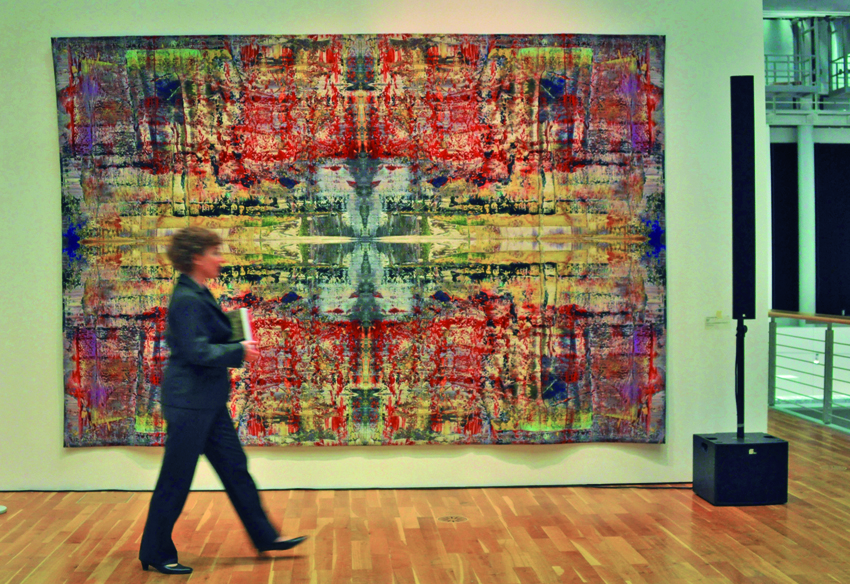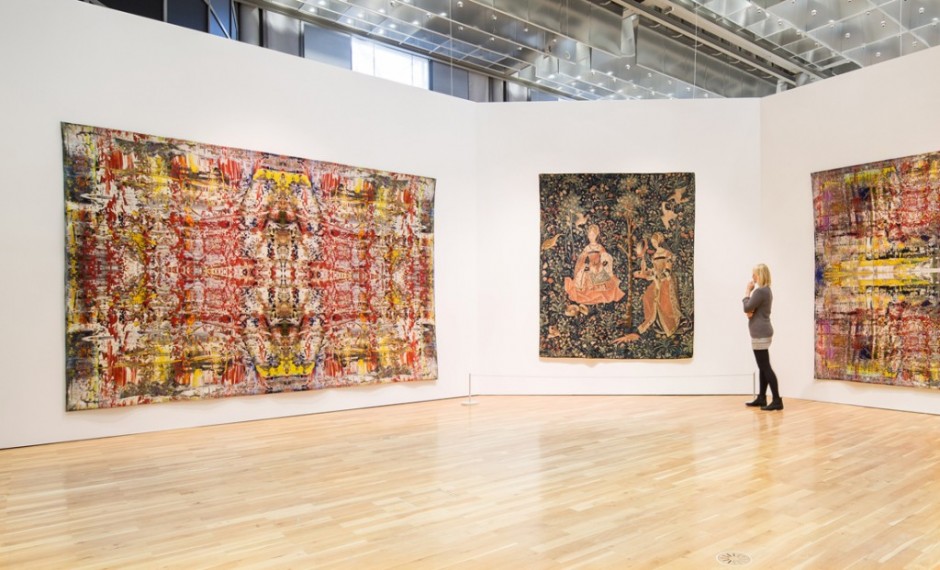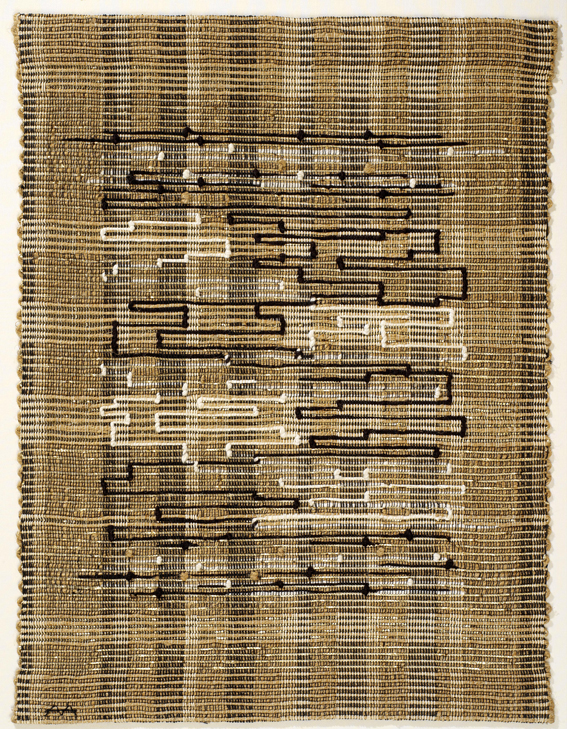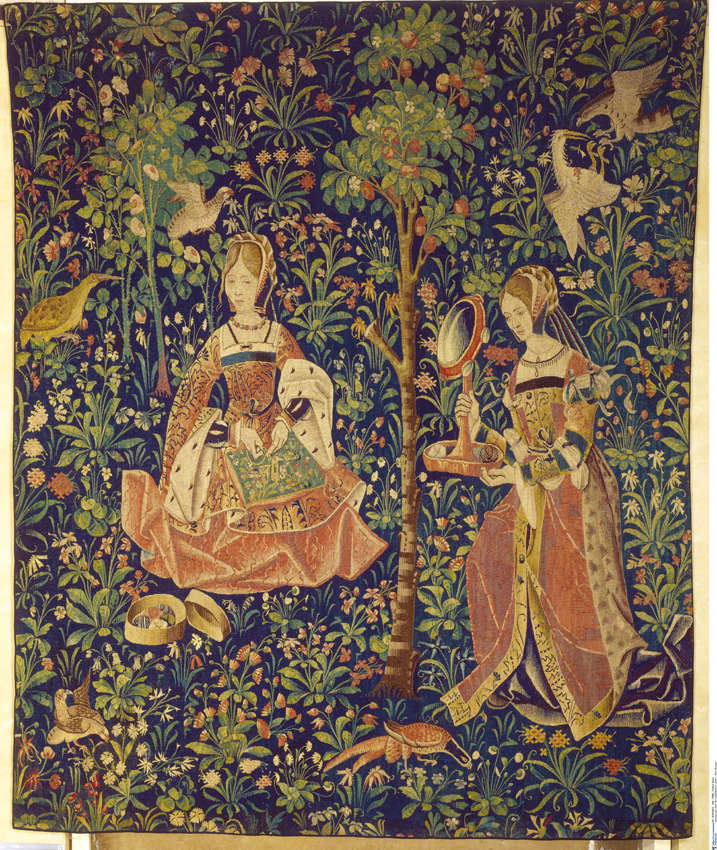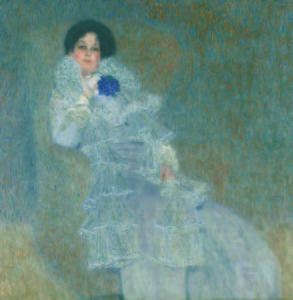 Mit dem Untertitel ‘Stoff als Material und Idee in der Moderne von Klimt bis heute’ wird diese große Ausstellung vom 12.10.13 bis 2.3.14 im Kunstmuseum Wolfsburg gezeigt (Hollerpl. 1, D-38440). Sie ist mit rd. 200 Arbeiten von 80 Künstlern sowie weiteren 60 anonymen Künstlern aus aller Welt ähnlich umfangreich wie die Pariser Ausstellung “Decorum”, behandelt fast den selben Zeitraum und die gleiche Thematik. Beiden Veranstaltungen ist gemeinsam, dass sie von Kunstwissenschaftlern konzipiert wurden, allerdings mit etwas unterschiedlichen kulturellen Hintergründen. Während der französische Kurator stärker in der Tradition der Tapisserie steht und die Tapisserietriennalen in Lausanne sehr viel aufmerksamer in seinem Konzept bedachte, scheint man in Wolfsburg umfassender auf den Einfluss des Textilen auf die moderne Kunst eingegangen zu sein.
Mit dem Untertitel ‘Stoff als Material und Idee in der Moderne von Klimt bis heute’ wird diese große Ausstellung vom 12.10.13 bis 2.3.14 im Kunstmuseum Wolfsburg gezeigt (Hollerpl. 1, D-38440). Sie ist mit rd. 200 Arbeiten von 80 Künstlern sowie weiteren 60 anonymen Künstlern aus aller Welt ähnlich umfangreich wie die Pariser Ausstellung “Decorum”, behandelt fast den selben Zeitraum und die gleiche Thematik. Beiden Veranstaltungen ist gemeinsam, dass sie von Kunstwissenschaftlern konzipiert wurden, allerdings mit etwas unterschiedlichen kulturellen Hintergründen. Während der französische Kurator stärker in der Tradition der Tapisserie steht und die Tapisserietriennalen in Lausanne sehr viel aufmerksamer in seinem Konzept bedachte, scheint man in Wolfsburg umfassender auf den Einfluss des Textilen auf die moderne Kunst eingegangen zu sein.
Die Ausstellung “Kunst & Textil”, die am Eröffnungstag 3.000 Gäste aus aller Welt zählte, gliedert sich in 11 Kapitel: 1. Der Jugendstil und die Verflechtungen zwischen Kunst und Kunsthandwerk; 2. Weben und Erfinden vor und während der Zeit des Bauhauses; 3. Die 1950er Jahre und heute: Das Informel und die Geburt der Textilkunst; 4.-6. Die 1960er- und 1970er Jahre: Filz/Fluxus/Antiform; Soft Art und Arte Povere, Minimal Art und Postminimalismus; 7. Zwischen den Kulturen: Afrika, Amerika, Asien, Orient und der Westen; 8. Spiderwomen: Bourgeois/Trockel/Hartoum/Amer; 9. Der Stoff zwischen Geist und Materie; 10. ArchiTextil: Die bekleidete Wand vom Mittelalter bis heute und 11. Vom Mumiennetz zum World Wide Web. In beiden Ausstellungen betont man, mit dem Textilen das Vorurteil des Femininen, Anachronistischen, Primitiven und Industriemäßigen abzulegen und stattdessen das Lebendige, Sinnliche zu betonen, das im Zeitalter der Computer verloren zu gehen droht. Beide Ausstellungen belegen, obwohl ein gemeinsames Ziel formuliert wird, dass es kein gemeinsames Erfahrungsrepertoire zu geben scheint. In beiden Fällen kennen sich die Ausstellungsmacher in Bereich der textilen Künste nicht ausreichend aus und messen mit der unzureichenden Elle der konservativen Kunstwissenschaft. Zum Beispiel treten bei insgesamt 110 in Paris plus 80 in Wolfsburg beteiligten Künstlern nur rd. 7 Künstler parallel auf: Anni Albers, Sonia Delaunay, Sophie Taeuber-Arp, Magdalena Abakanowicz, Alighiero Boetti, Rosemarie Trockel und Pae White. Die sehr sorgfältig recherchierte und aufwendig installierte Ausstellung in Wolfsburg versteht sich als umfassendes Projekt zum Verständnis des Einflusses des Textilen auf die moderne Kunst ab dem Jugendstil und könnte einem breiteren Publikum zur Einführung in das Thema Kunst und Textil empfohlen werden, wenn es doch nur ein wenig mehr von Verständnis des textilen Mediums geprägt wäre (siehe Katalogbesprechung). Die Ausstellung wird in leicht reduzierter Form nochmals vom 21.3 bis 22.6.2014 in der Stuttgarter Staatsgalerie gezeigt (Konrad-Adenauer-Str. 30-32, D-70173).
